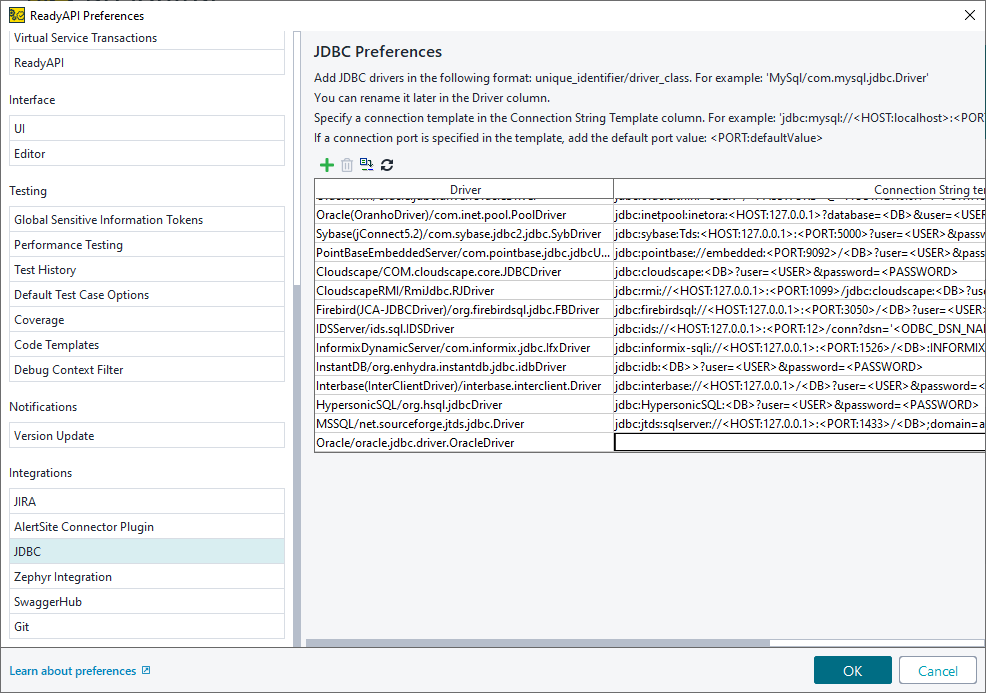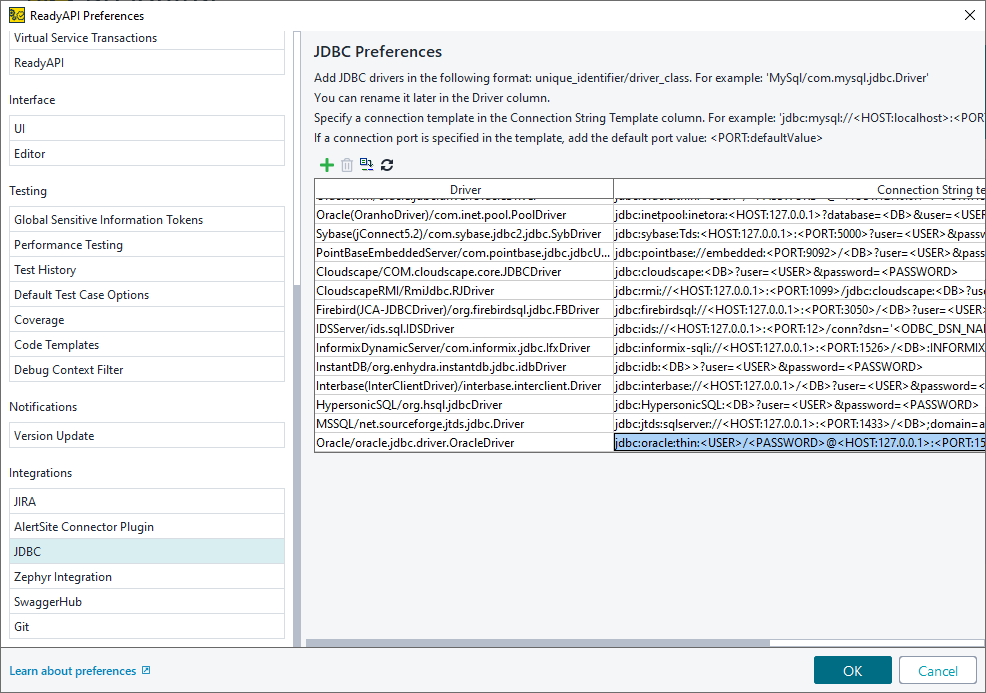The Oracle JDBC driver provides connections for the Oracle databases.
To install the driver, do the following:
-
Download the Oracle database JDBC driver.
-
Extract the archive file.
-
Copy the ojdbc8.jar file to the <ReadyAPI installation>/bin/ext.
-
Restart ReadyAPI to load the driver.
Connection String Template
ReadyAPI has preconfigured connection string for the Oracle database. If you need a custom one, add it by using the ReadyAPI Preferences menu:
-
Click
 Preferences on the toolbar.
Preferences on the toolbar. -
Open the JDBC Drivers settings.
-
Click
 .
. -
Enter a descriptive name, for example:
Oracle/oracle.jdbc.driver.OracleDriver.The new connection will appear at the end of the list.
-
Add a connection string template, for example:
jdbc:oracle:thin:<USER>/<PASSWORD>@<HOST:127.0.0.1>:<PORT:1521>:<SID>
Kerberos authentication
To connect to the Oracle database by using Kerberos authentication, do the following:
-
Create a Kerberos configuration file:
krb5.conf
[libdefaults]
default_realm = DB.EXAMPLE.NET
udp_preference_limit = 1
[realms]
DB.EXAMPLE.NET = {
kdc = YOUR-DB-KEY-DISTRIBUTION-CENTER-SERVER
default_domain = db.example.net
}
[domain_realm]
db.example.net=DB.EXAMPLE.NETIf you use Kerberos to authenticate your requests, you need to add a new realm to the file. See the Kerberos documentation for details.
-
Run the
kinitutility to get a ticket-granting ticket. You can find this utility in the <ReadyAPI>/jre/bin directory.After you specify the password, the utility will create and cache a ticket-granting ticket. Remember the path to the cache file.

The generated ticket has an expiration date. To check whether a ticket has expired or not, use the klistutility that is located in the <ReadyAPI>/jre/bin directory. -
Add the following parameters to the Java virtual machine:
JVM Settings
‑Djava.security.krb5.conf=<Path to the Kerberos configuration file>\krb5.conf
‑Doracle.net.authentication_services=(KERBEROS5)
‑Doracle.net.kerberos5_mutual_authentication=true
‑Doracle.net.kerberos5_cc_name=<Path to the ticket-granting ticket>The way you do this depends on how you run ReadyAPI. See Modifying JVM Settings.


